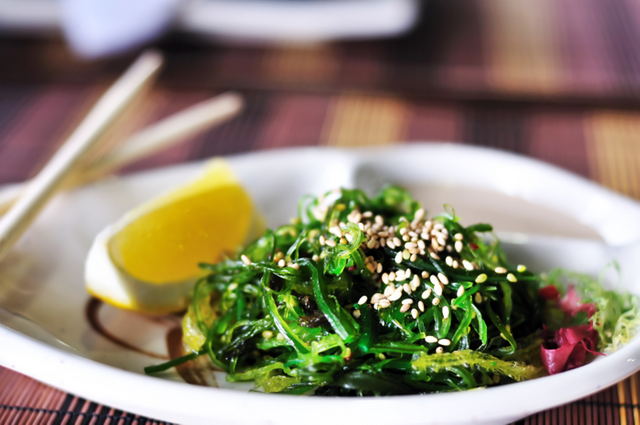
Surely you have heard of algae as food and it is possible that you have even had the courage and curiosity to try them on a visit to a Chinese, Japanese or macrobiotic restaurant. You may even have enjoyed the experience but think that these foods are too exotic to use on a daily basis and as such are part of a special group of products that are used in exceptional times to increase the gastronomic culture or to have fun.
Or, you think you'd like to use them regularly but you do not know where to buy them, let alone how to cook them; in addition you have no idea what algae you should choose, since there are so many different varieties.
Well, in this article I will try to elucidate you about these precious foods and give you some tips on how to use them.
Algae are literally marine vegetables (just like carrots or broccoli are terrestrial vegetables) and have been used for centuries as food by people like the Chinese, Japanese, Scots, Irish, Icelanders, Scandinavians, Germans, as well as Latin America that used them as medicine for different ills.
Sea vegetables have a rich mineral wealth, particularly calcium (they are much richer in calcium than dairy products) and in trace elements such as copper, zinc, strontium, cobalt, nickel, molybdenum, lead, tin, vanadium, bromine, silver , chromium, barium, lithium, bismuth; its protein content is also quite high as well as the content of carbohydrates and vitamins, some of the algae having significant amounts of vitamin B12 which is generally considered to exist only in animal products.
If you were impressed by the nutritional value of these foods, also know that algae, when well made, are extraordinarily tasty and greatly enrich a meal. In a country like Portugal, we can eat algae regularly since we are bathed by an extensive coast and just as we ingest enough fish we should ingest its habitat mate - the seaweed.
When buying algae, the best available in the Portuguese market are the Japanese ones or the ones from the coast of Brittany, since they are collected or grown in low-polluted seas (Breton coast and northern region of Japan - Hokaido Island).
The most used are:
Wakame - Smooth-flavored, wakame are mostly used in soups or made in conjunction with vegetables. You should soak them for about 20 minutes and the cooking time is 15, 20 minutes.
Kombu - excellent for cooking in conjunction with legumes (they make them much more tender and digestible, avoiding the formation of intestinal gas) or with vegetables should also be soaked and take longer to cook than wakame (30 to 45 minutes or more).
Nori - very fashionable at the moment, since it is with this seaweed that the famous sushi is made, the nori is prepared to toast it quickly in the flame of the stove. You can either eat it directly (it tastes nice to fish) or cut it into pieces and sprinkle it over the soup, vegetables or beans.
Aramé - very fine seaweed that is cooked with vegetables, excellent for the female reproductive organs (but also good for men); should soak about 15 minutes and cook for about half an hour (or more).
Hiziki - texture similar to aramé, but thicker and with a much stronger sea flavor, hiziki seaweed has a huge amount of calcium (see table); kitchen as the arame.
Agar-agar - in flakes or bar, agar-agar prepares fantastic fruit or vegetable jellies; excellent for constipation and to help lose weight; you should soak it a few minutes and cook until the kelp dissolves; then allow to solidify and obtain an excellent gelatin.
These are the main algae used - you can also try other, lesser known and a little more exotic like the dulse, mekabu, or sea lettuce.
image source: www.freshdesignpedia.com
yummy
Downvoting a post can decrease pending rewards and make it less visible. Common reasons:
Submit
If chosen it will feature in a curation post by @MuxxyBot.
An image from your post may be featured.
Please reply to this comment if you accept or decline.
Downvoting a post can decrease pending rewards and make it less visible. Common reasons:
Submit